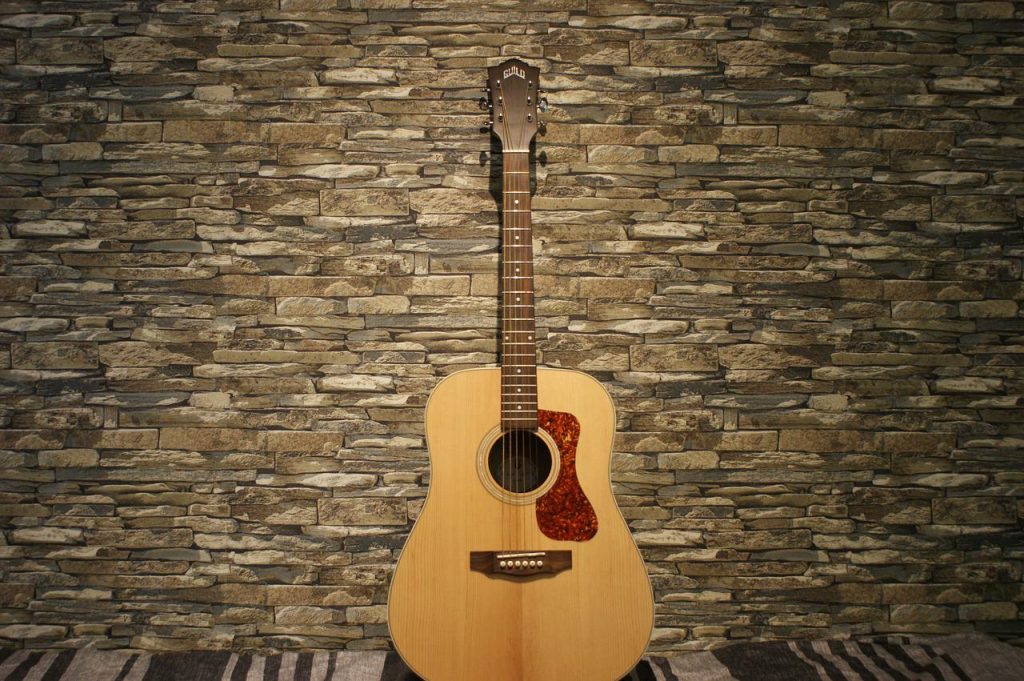Have you perfected your acoustic guitar skills and would like to push your performance to the next level? Learning how to amplify an acoustic guitar is important.
Acoustic guitars are fantastic, but because they are acoustic, you need to amplify your performance when you want your bar, nightclub, or restaurant customers to listen to whatever you’re performing.
If you want to push your performance up a notch, here are some options for amplifying an acoustic guitar. When you do a little study, you could figure out what’s best suited for you, the sound you make, and the people you want to reach. Let’s get started!
How to Amplify an Acoustic Guitar
1. Directly into PA Systems
Sound reinforcement can be as simple as plugging your instrument into the venue’s PA system, which is convenient and inexpensive. You don’t need anything else but your guitar, a wire, and your lovely self. However, because you are completely at the whim of the PA system, this is the most musically challenging and unexpected option.
Majority of the acoustic guitars with such a preamp/pickup combination feature at least a volume control and 3-band EQ, allowing you to adjust the tone. Nevertheless, you’re still at the whim of PA systems, and not every PA system is made the same, and not every event has a sound technician.
2. Direct Injection or Preamp pedal
Using a preamp or direct injection pedal is another step forward. It’s a great approach to get the best sound possible with a constant PA system.
After connecting your guitar to the PA, preamp pedals will allow greater control over how your instrument sounds before it is fed into it.
You’ll find many sonic options when you begin to experiment with pedals and mixers, like EQs and reverbs.
The BOSS AD-10 Acoustic Preamp is a fantastic example of this. It includes stage-ready functions, including compressor and response reduction, convenient effects, chorus, delays, reverberation, and even alternatives to improve your technique like an inbuilt looper! Using an AR control, you may reclaim some of your guitar’s original body tone, typically lost using piezo pickups.
Even though the BOSS VE-8 Acoustic Singer is designed for guitarists, singers, and music producers alike, it has a voice mic input, enhancements, and the ability to recognize chords you are performing on the guitar to create vocal harmonies that complement your singing.
You can regulate their voice processing and melodies while communicating with the audience.
3. Acoustic Amplifiers
When you don’t have the funds to purchase a complete PA system, an excellent acoustic guitar amplifier may be the finest option for customizing and playing your sound. Most acoustic guitar amplifiers include several or every one of the functions found in a good preamp pedal and the additional – and crucial – bonus of operating as a compact PA system.
When you’re busking or doing a little gig, an acoustic guitar amplifier with another mic channel needs to be sufficient to convey your sound to your audience’s ears. It’s still possible to profit from an acoustic amp even when performing at larger venues with PA systems.
Most offer a Direct Injection output to connect to the PA system and take advantage of your amp’s audio control while simultaneously serving as an onstage monitoring speaker. Having more onstage volume would assist you in hearing yourself better than just listening to the foldback wedges to get a good mix with full bands.
Any of these scenarios are well suited to the BOSS Acoustic Singer line. The three versions are all based on a double amp construction with an independent tweeter and woofer, allowing for crisp and natural audio procreation across the frequency spectrum without getting muddy.
Auxiliary input for XLR outputs for larger PA systems, supporting music, and USB audio connections for PC recording/playback are all included in the package.
The ACS Live and ACS Pro variants include an integrated looper and sophisticated vocal harmony synthesis depending on your acoustic guitar playing.
Conclusion
So, how to amplify an acoustic guitar? All that’s yet to be determined is the degree of sound manipulation and audience involvement you need.
Preamp/DI pedals are ideal for guitarists who don’t play any other instruments.
If you’re a singer-guitarist, a combined vocal and guitar pedal will amplify your guitar, allowing you to sing with more emotion.



